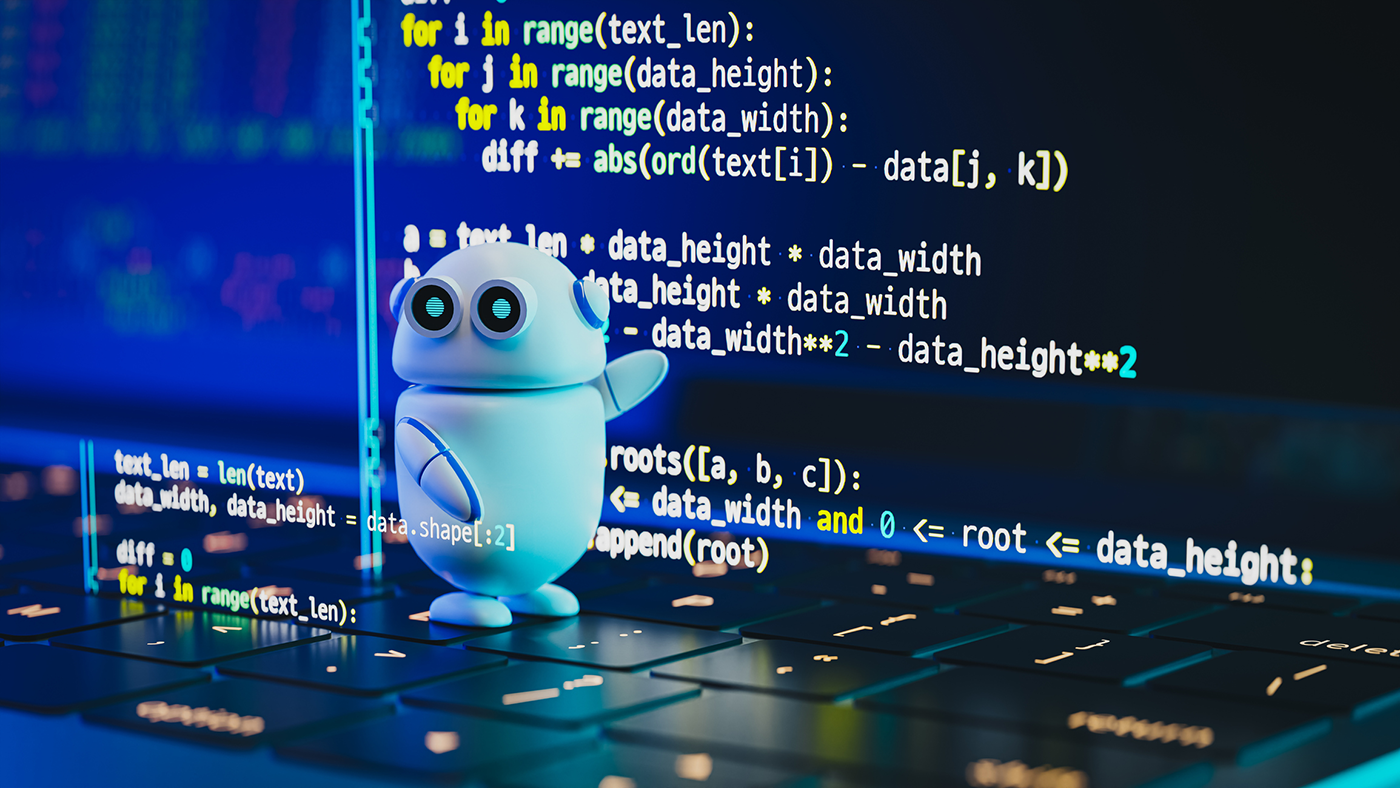AI and Automation Transforming Software Development
eco's Andreas Weiss and Lauresha Toska on how vibe coding, federated architectures, and low-code platforms are redefining agility and compliance in today’s decentralized digital ecosystems.

© ipopba | istockphoto.com
Artificial intelligence and automation are fundamentally reshaping software development – driving greater agility, collaboration, and alignment with the complex, emerging decentralized digital ecosystems. As organizations face growing regulatory demands and technical complexity, new approaches are redefining how software is created and integrated.
From isolation to integration and the rise of vibe coding
Traditional coding methods often treat software as isolated components. The emerging approach, vibe coding – a development mindset centered on seamless interaction within larger, interconnected systems – shifts this paradigm by emphasizing holistic, system-level integration
Vibe coding raises critical questions for developers: How does my code operate within a federated system? Can it adapt dynamically across multiple cloud providers, edge devices, and service platforms? Is it compliant with evolving legal requirements? This integrated mindset is essential for modern, distributed systems.
However, vibe coding comes with challenges. Overdependence on AI to write code risks eroding developers’ foundational skills. AI-generated code may lack the nuanced understanding needed for high-stakes environments, and security vulnerabilities can creep in without human oversight. That’s why a balanced approach – leveraging AI while maintaining rigorous manual review – is vital.
Beyond these concerns, integrating diverse systems introduces complexity, latency challenges, and ongoing compliance hurdles. Distributed architectures must manage data flow efficiently to prevent bottlenecks while adhering to strict regulatory standards that adapt over time. Achieving this balance requires a hybrid approach – leveraging AI for speed and efficiency, complemented by rigorous human oversight and manual code reviews.
This leads us to Federation Architecture Patterns (FAPs), a cornerstone for building secure, interoperable, and compliant digital ecosystems. As vibe coding expands from a development mindset to an architectural framework, FAPs offer the structure needed to sustain it.
FAPs provide architectural frameworks that:
- Manage federated identities
- Facilitate trustworthy data exchanges
- Enforce governance across organizational and national boundaries
Complementing this, Low-Code Orchestration platforms democratize software development across organizations, allowing users without deep programming expertise to build and adapt applications quickly. When augmented with AI, these platforms accelerate prototyping, embed governance rules, and provide real-time quality assurance.
Of course, Low-Code tools have limitations, especially around customization. That’s where AI’s role is critical: to guide development, ensure security, and maintain code quality, balancing speed with robustness.
To put this into perspective, imagine a European logistics network comprising multiple independent providers. They need to optimize routes using AI while adhering strictly to data privacy regulations. Using FAPs, they establish a trusted, federated identity system and secure data exchanges. AI orchestrates localized model training – preserving data sovereignty – and deploys compliant, optimized solutions across edge devices. Low-Code Orchestration platforms empower operators to adjust business rules quickly without heavy IT dependency.
Conclusion: A new era of agile, secure, and compliant software
Together, vibe coding, FAPs, and AI-powered Low-Code Orchestration platforms represent a transformational triad in software development. They enable:
- Agile, cross-border collaboration
- Robust data protection and compliance
- Scalable, secure, and decentralized systems
The result is a new generation of software tailored for decentralized, privacy-conscious, and interconnected digital ecosystems.
📚 Citation:
Weiss, Andreas, & Toska, Lauresha. (November 2025). AI and Automation Transforming Software Development. dotmagazine. https://www.dotmagazine.online/issues/ai-automation/ai-in-software-development
Andreas Weiss is Managing Director of eco – Association of the Internet Industry. He has been with the association since 1998 and headed the E-Commerce and Logistics Competence Group and later the E-Business Group. Since 2010, he has been Director of EuroCloud Deutschland_eco e.V. and since 2019 a member of the board of Trusted Cloud, where he has been responsible for the association's cloud activities. Weiss is also involved in projects related to artificial intelligence, data protection and the GDPR, as well as the security and compliance of digital services in eco's Digital Business Models division.
Andreas Weiss is involved in a number of initiatives related to designing digital ecosystems, applying sovereign digital identities, and building AI operating structures with cloud and edge concepts, all with a focus on supporting the EU's ability to shape digital innovations and processes.
He started his freelance software development career in 1984 while still studying natural sciences. He coordinated international projects in service management for Hewlett-Packard and worldwide installation services for Sun Microsystems servers.
Lauresha Toska is Senior Manager for Innovation & Digital Ecosystems at eco – Association of the Internet Industry. As Technical Lead of FACIS (IPCEI-CIS) and Project Lead of Eclipse XFSC, she leads strategic efforts to advance Europe’s digital resilience through federated infrastructures, self-sovereign identity (SSI), and secure, interoperable cloud-edge ecosystems. With a background in IT engineering and digital business, she bridges technology and policy to strengthen digital sovereignty and shape resilient, future-proof ecosystems across Europe.
FAQ
1. What is “vibe coding” and why is it relevant now?
Vibe coding refers to a modern development approach where code is designed to operate in harmony with decentralized, federated systems. It shifts focus from isolated code blocks to integration within complex, interconnected environments.
2. How does AI help in software development without replacing developers?
AI accelerates code generation and prototyping but still relies on human oversight for security, compliance, and contextual quality. Experts like Andreas Weiss of eco emphasize that maintaining manual review is crucial for safety and integrity.
3. What are Federation Architecture Patterns (FAPs) and what problems do they solve?
FAPs help ensure secure data exchange, federated identity management, and legal compliance across borders. They are essential when software systems must interact across multiple providers, jurisdictions, or infrastructures.
4. What are the risks of relying too much on AI-generated code?
Overdependence on AI can lead to:
• Diminished core coding skills
• Security blind spots
• Lack of legal compliance if unchecked
Balanced oversight is key, as highlighted in the article by eco – Association of the Internet Industry.
5. Can non-programmers safely use Low-Code platforms in complex systems?
Yes, with guardrails. Low-Code Orchestration tools democratize development, but must include:
• AI guidance for compliance
• Built-in governance rules
• Human-in-the-loop review to catch errors
6. How do AI and FAPs work together in a real-world example?
In the article’s logistics case, AI trains local models for routing without violating data privacy, while FAPs secure cross-provider data exchange. Together, they enable compliance and performance in decentralized ecosystems.
7. What role does eco – Association of the Internet Industry play in this space?
eco supports secure, decentralized innovation by advancing standards, facilitating expert dialogue, and highlighting best practices in software architecture and compliance, as featured in dotmagazine.





